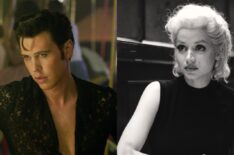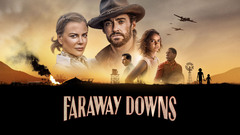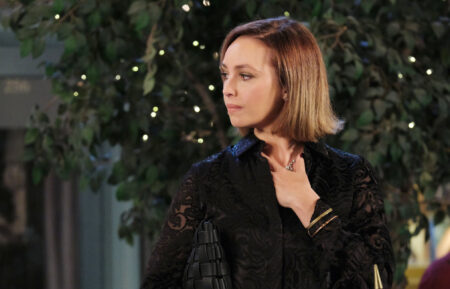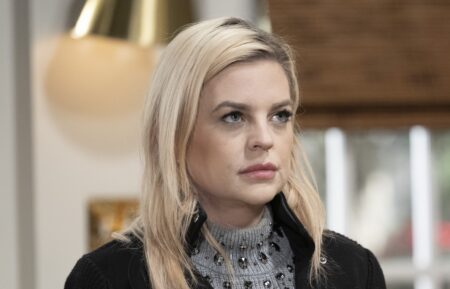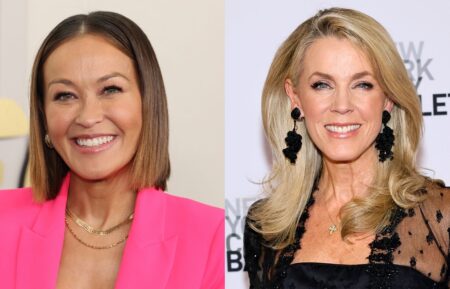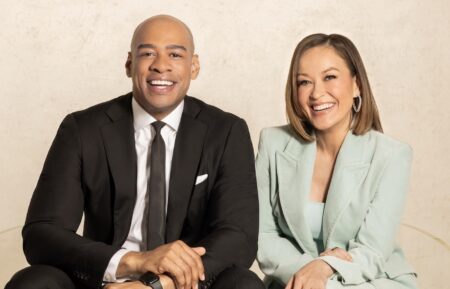‘Faraway Downs’: Baz Luhrmann on Expanding Nicole Kidman & Hugh Jackman’s Characters in ‘Australia’ Reimagining
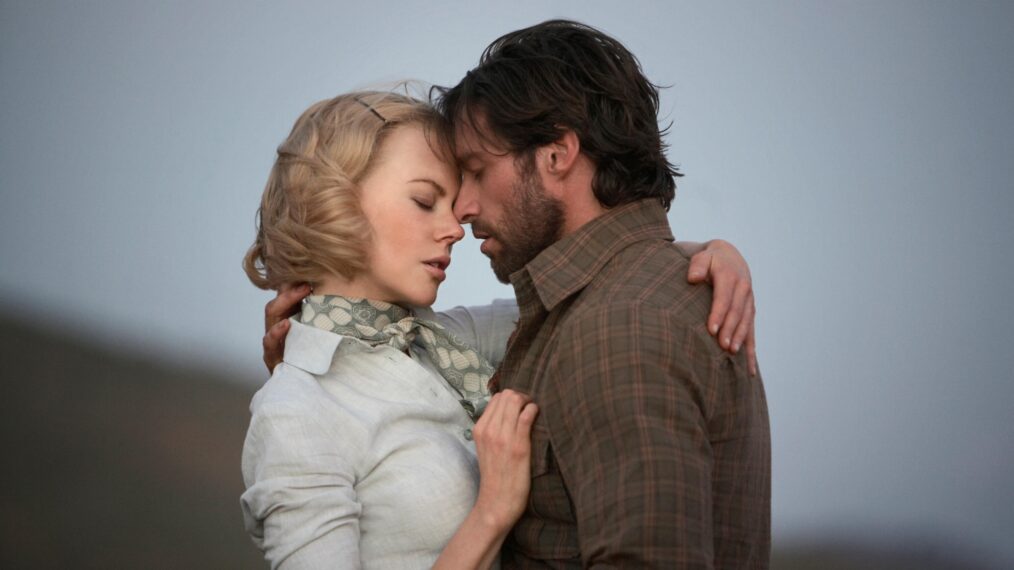
Q&A
More Nicole Kidman and Hugh Jackman? Crikey, yes! The Aussie stars get an expanded turn as passionate lovers in lauded film director Baz Luhrmann’s (Moulin Rouge!, Elvis) reimagining of his 2008 WW2-era epic Australia. The Oscar-nominated director added about an hour of footage from the original shoot to make six compelling chapters of Faraway Downs that drop simultaneously on Hulu November 26.
The tale is told by a mixed-race Aboriginal boy, Nullah (Brandon Walters) who lives at the remote Faraway Downs cattle station. His life changes with the visit of proper British Lady Sarah Ashley (Kidman). She’s compelled by an unexpected tragedy to stay on and help the rugged Drover (Jackman), known only by his job title, herd the livestock to sell in Darwin. Cue adventures galore.
Below, Luhrmann answers our questions about the scenes he was happiest to see rescued from the cutting room floor, Kidman and Jackman’s chemistry, the importance of Nullah’s character, and that new ending.
What scenes that you had to cut from Australia were you most thrilled to see brought back into the story now that it has been given an extended cut and made into six episodes? Has any moment you were unable to fit into the film haunted you since 2008?
Baz Luhrmann: It’s important to understand that this is not so much a director’s cut, but a revisiting of the film Australia and a reimagining of it. The thrilling part of the experience was allowing myself and the team to look at the themes of Australia and deepen them. Having said that, there are one or two scenes that we simply couldn’t include in the film. One of them is, after arriving at Faraway Downs and discovering a tragic twist, Nicole’s character, Lady Sarah Ashley, is about to leave, and she is confronted by Hugh Jackman’s character, he goads her into staying one extra night. The scene really defines their “Spencer Tracy, Katharine Hepburn” style relationship and I think it was one of the best scenes we shot during the whole production. All on location and all three actors (David Wenham included) are top of their game. It’s a delicious scene and I was so glad to see it come back into the production.
In addition, the crossing of The Kuraman, which is a great drama, was very much compressed in screen time for the production of Australia. There was a near fatal tragic twist, in the middle of the journey across this uncrossable desert, that had to be jettisoned for running time. I won’t give it away as it’s a spoiler alert, but it takes place during a sandstorm. To bring that back into the story was very enriching.
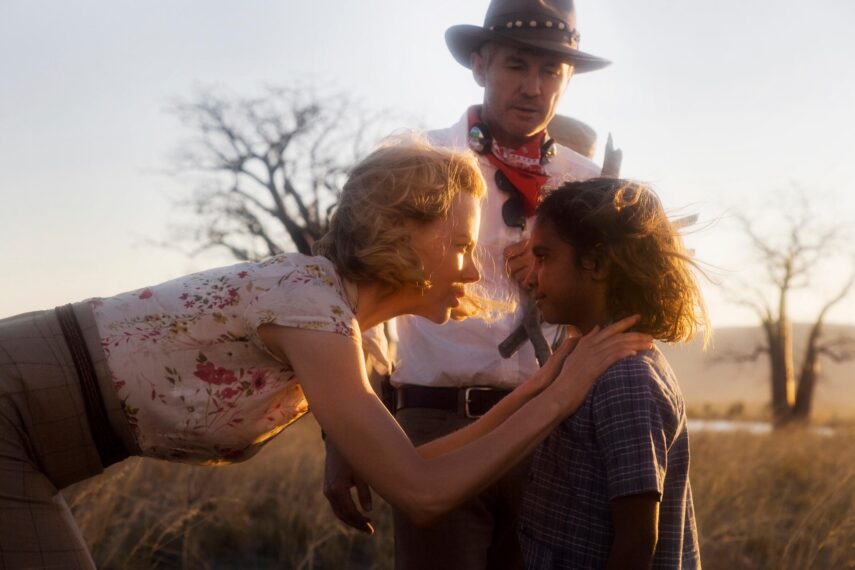
Courtesy of 20th Century Studios
And finally, the big theme of the movie was really told from the mixed race, Aboriginal boy’s point of view — the theme, which is that you really can’t own things, not land, not people, not children. As Drover, Hugh Jackman’s character, says, “The only thing you can really own is your story, so you better try and live a good one.” I think that theme, of self-realization and not relying on anything — land or another person — for your own validation, has been enriched in this version of the story.
Australia tells an epic love story. What was most important to you in expanding the characters Lady Sarah Ashley and The Drover in this version? How are they painted more vividly?
This is a good question because in revisiting Australia, I recognized that in allowing more time for their characters to breathe, for Nicole, it made more room for her humanity, and for Hugh, well, I don’t want to give it away, but there is a huge revelation about who he is that isn’t revealed in Australia. You’ll have to watch until the very end, to the last frame to know what that is.
Could you describe the chemistry between Nicole Kidman and Hugh Jackman? How did it feel to see them together again when you were in the editing room?
I was reminded that what is so wonderful about them as a screen couple and about their screen chemistry was that they do really embody some of the beloved characteristics of classic stars. What I mean by that is that they have a natural comic quipping but also are so naturally romantic. I tried to take some of those classic films, like Gone With The Wind, and flip them and tell them from the indigenous child’s point of view. Part of that is in the very beginning of the film, we have quite over the top old-fashioned comedy. It’s really a device to kind of disarm and trick the audience because, very quickly by the end of the first beat, we flip the style completely, and it becomes a psychological drama. So the storytelling very quickly becomes more and more realistic and more and more grounded. Until by the end, it’s stripped bare for its humanity and tragedy. To achieve this, you need two actors who could really handle everything from really broad comedy to intermit psychological drama, action, and most particularly have romantic chemistry, which Hugh and Nicole exude on screen in buckets.
The story is equally about Australia’s racist past and the Lost Generation. Do you feel that Nullah’s story is more important than ever, especially considering the recent defeat of the “Voice” Referendum?
That’s an extraordinary question, and I found myself on stage recently with a very revered young indigenous moderator Narelda Jacobs and some of our wonderful First Nations collaborators who worked with us on the movie. There is no doubt, that at the end of a week of silence, where perhaps politics has failed, storytelling can be buoyant. And I for one was very privileged and honored that this story, at this moment, has even more resonance and relevance and is a story that speaks to hope for the future.
You’ve said you wrote six different endings for Australia and that you shot three of them. Will fans of the original film see a different ending, and is it the one you wanted all along?
That’s a bit apocryphal, I don’t know that I wrote six endings, and in fact, because I am playing with the notion of melodrama and high tragedy, in a Shakespearian sense, there is a lot of tragedy that beset the characters. Loss, for Lady Sarah Ashley, is one of the most important experiences for her to arrive at the reality that she cannot be defended by land or other human beings, but simply by her own journey. That’s a long way of saying yes, there is a different ending. I do think in the end, while Australia stands alone, this ending amplifies that oh so important theme in the best way.
Anything else you want to mention?
Only that Australia, the film, really does have quite a big fan base. It’s still my biggest film in Europe, even more than Elvis. And I have to give respect to those fans because that movie stands alone. Faraway Downs, though, is an experiment in taking a story and revisiting it for this moment, at this time. I was very fortunate that in the back of my mind, I always felt that I’d be able to truly fulfill the epic nature of this story. Epic means enough time to tell the story in its full, realized form. I think of Charles Dickens, who delivered all of his novels episodically, when I think of episodic television. This is one of the great luxuries that streaming allows. I hope that people can enjoy the two different works, realized out of the same story and the same materials. If it does, it is something I would look to explore further in the future on other works.
Faraway Downs, Series Premiere, Sunday, November 26, Hulu

